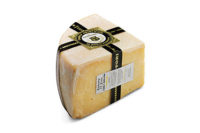Businesses are like organisms. They are made up of individual cells, which are called departments. For the business to thrive, each department must be healthy, and departments must constantly exchange information with one another.
SR Rosati Inc., a maker of Italian ice based near Philadelphia, is a perfect illustration of this idea. It was not thriving. When owner Richard Trotter took stock of his business, this is what he found:
- The freezers weren’t running efficiently.
- The recipes needed to be updated and new products had to be developed.
- The dry goods warehouse was poorly organized.
- Administrative departments were reluctant to share information.
- Customer service was lacking.
“I didn’t want to survive. I wanted to thrive,” Trotter said.
Responding to these conditions, Trotter:
- Hired a production manager who found that the freezers were running too long. By shortening the freezing time, Rosati now produces more Italian ice from the same number of freezers.
- Hired a flavor expert who tweaked the recipes and developed new ones. The new items give the sales staff something to talk about as they call on school foodservice directors and supermarket buyers.
- Hired a general manager who set new job performance and customer-service expectations for plant and administrative personnel.
- Hired a warehouse manager who reorganized the space, and contracted with a service that inventories the goods off-site and delivers them as needed.
- Hired three young sales people on commission to crack new accounts in foodservice, and hired a sales veteran who brought existing relationships with supermarket buyers.
In summary, Rosati today has new flavors that are popular with customers and production is able to keep up with demand without having to buy additional freezers. With each department operating smoothly and sharing information throughout the company, Trotter has time to perform the typical CEO functions, like steering the company to achieve its goals.
SR Rosati Inc. is a 103-year-old company located in Clifton Heights, Pa. (See related article on page 42.) The plant and administrative offices are in an unassuming 60-year-old brick building on the edge of a residential neighborhood. Sam Rosati founded the company in 1912. Rosati’s daughter Rosemary and her husband, Jim Salomone, live in an apartment above the plant. In 1997, the Salomones sold the company to their son-in-law Dave Schumacher and to Trotter. In 2010, Trotter bought out his partner.
Rosati makes what Philadelphians call “water ice.” Elsewhere, it is called Italian ice. Customers include schools, supermarkets and independent scoop shops. Rosati has more than 100 SKUs in flavors and packages, which range in size from 4-ounce cups to bulk cans.
Vice President Al Everetts re-formulated the ices with a proprietary blend of stabilizers so that they are always scoopable when removed from a consumer’s freezer. Ices from some other manufacturers are rock-hard coming out of the freezer and need tempering before serving. Everetts, who develops all of the new flavors, also re-vamped the company’s legacy recipes. For example, he switched to natural colors for a product line sold to school foodservice directors.
The plant tour
Rosati’s was making Patriot Ice on the day ofDairy Foods’ visit. The cups are filled with red, white and blue ice (cherry, lemon and blue raspberry flavors, respectively). Production Manager Hamed H. Seresty began the tour in the mixing room where the flavors are prepared. Liquid ingredients are measured out in cups and powdered ingredients are weighed on scales.
The ingredients are poured into a 170-gallon mixing vat and then they are pumped to one of the six 200-gallon flavor vats. Here, Seresty adds sugar, water and stabilizers. To make the items sold in schools, Rosati uses apple juice as the sweetener. This allows the company to market the products as “no sugar added.”
After a thorough blending, the liquid mix is pumped to the continuous batch freezers. Rosati’s has 18 40-quart freezers and three 20-quart freezers. Trotter noted that wear and tear on the equipment is greater than if he were making ice cream. Milkfat (found in ice cream mix but not Italian ice) acts as a lubricant. Spare parts are always on hand and a regular maintenance routine keeps the freezers operating.
After freezing, the mixture is pumped into hoppers where it is held until the packaging room is ready. Then the frozen mixture is pumped to a six-lane filler in an adjoining room. The three flavors used in Patriot Ice are collated and in one pass a nozzle deposits the red, white and blue ices into a cup. Then a paper lid is put down over the ice, a wooden spoon is added and the cup is sealed in foil.
After the cups are topped with foil, they are hand-packed into cardboard cartons. A date and code are printed on the cartons, which are then conveyed to the freezer where associates build pallets. The shelf life is 548 days (18 months). Finished goods are trucked to a third-party cold storage facility.
For flavor changes, the production crew rinses the lines. There is not a clean-in-place regimen that one would find in a dairy plant, Seresty said, because Rosati does not use allergens. There are no dairy, soy, peanuts, tree nuts or eggs in the plant. Rosati’s uses only water, flavors, sugar and stabilizers.
Rosati’s sells 4-ounce cups to the school foodservice market, and packages 6- and 10- ounce cups and 2-quart pails for retail sales. Three-gallon tubs are sold to scoop shop owners, who re-sell the product as Rosati’s or as their own. Rosati also sells directly to consumers from a walk-up window next to the administrative office. For some Philadelphians who moved out of town, their first stop when they return for a visit is that walk-up window for a taste of water ice.
Efficiency improvements
When he hired Seresty, Trotter said he increased product throughput without buying additional equipment or adding to the payroll. An engineer by training, Seresty studied the production process and discovered that operators were overblending the ice. At a certain point, which Seresty measured with a temperature gun, the water mixture was sufficiently frozen and ready to be packaged. Running the freezers beyond that point was pointless. It slowed down productivity and wasted energy.
Seresty did not just buy temperature controllers for the freezers; he did the wiring himself. As a result of his analysis, the plant can now fill an additional 50 cups per minute, or 30,000 more cups per day. Stated another way, daily production increased 37.5%, from 16 to 22 pallets without any capital expenditures. It’s no wonder that Trotter calls his production manager “brilliant.”
“He brought us into the 21st century,” Trotter said.
Hiring Denis Collier as general manager was another turning point at Rosati. He broke down barriers in the front office and focused the staff on customer service issues. In the plant, he demanded a higher level of performance. Immediately, he led by example. He worked on the packaging line and performed housekeeping tasks like taking out trash and scrubbing toilets. The company dropped its cleaning service because now everyone pitches in, Collier said.
Collier came to Rosati with a background in air freight and logistics. Working with the office staff, he installed a system for customer communications and how to set their expectations. The office staff now calls back every customer to confirm orders and communicates with them about when to expect delivery.
A similar re-organization happened in the warehouse. Trotter described moving pallets to find supplies as “warehouse gymnastics.” After the items were found, the pallets were moved back into position and the process would be repeated the next day.
Trotter brought in Rob Tarpey, a childhood friend of General Manager Collier. Recalling the first months when he joined the company, Tarpey described the warehouse situation as “chaotic.” He consolidated orders and re-organized the space. Rosati owns some trucks that it uses for short runs and contracts with trucking companies for other needs. Tarpey said he has tried to make the warehouse and trucking operations “as seamless as can be.”
But what made all the difference was signing up with a distribution company called Bunzl. The service holds supplies for Rosati and delivers them as needed, freeing up warehouse space. Tarpey said that when Bunzl came in, “I cleared out so much space. Time and labor are down. Everything is readily accessible.”
Now, Tarpey reviews his production schedule and orders supplies a week at a time from Bunzl. “They feed us what we need as we need it,” he said.
Trotter said Bunzl also alleviates long-term purchase costs. Rosati had been buying four-month’s-worth of supplies. He said the service “allows us to be more sure of our production plans. We don’t have to move as many raw materials and dry goods” because Rosati no longer has to buy in large quantities.
The next step in improving efficiencies will be the installation of an IT system to track materials and orders. Entering orders is a huge administrative task and a lot of the same information is replicated by different departments. Managers throughout the company will be able to see what is on hand and what needs to be ordered.
Right now, Tarpey keeps track of things in his head.
“When Rich throws a wrench in the schedule, instead of me breaking it down, I ask Rob,” Collier said. “He memorizes the POs. Do we have enough cups? He can tell me.”
Tarpey knows off the top of his head because he admits to having a photographic memory (which he said can be a curse). For that reason, Collier gave him the nickname Rain Man (after the Dustin Hoffman character in the movie of the same name).
Looking ahead
Eventually, growth might force Rosati to build an addition or even a new plant. The company does own land across the street from the facility. Trotter said he is proud of being located in Clifton Heights and is “hesitant” to move away after 60 years in the same location.
But in the meantime, to accommodate increased sales, the plant would change to two 8–hour shifts instead of the current 10.5-hour shift, Trotter said. Adding a shift will require more production supervisors. The company will promote from within if the talent is there.
“We have an eye for down the road to fill positions,” Trotter said. But it won’t be based on the Peter Principle, in which an employee is promoted into a more responsible position based solely on tenure at the company, not skill set.
“We don’t have an entitlement mentality. You have to prove yourself,” Trotter said.
Thanks to good hiring and clear goal setting, Trotter’s 32 co-workers have proved themselves capable of handling increased sales, production demands, product development and customer service. The organism called Rosati is healthy and continues to grow.
At-A-Glance
SR Rosati Inc., Clifton Heights, Pa.
- Year opened: 1912
- Year plant opened: 1950
- Employees: 32
- Products made: Italian ice
- Formats: 4-, 6- and 10-ounce cups; 2-quart pails, 3-gallon tubs
- Freezers: 18 40-quart capacity, three 20-quart capacity
- Flavor vats: Six 200-gallon vats
Photos by Sabina Louise Pierce Photography










